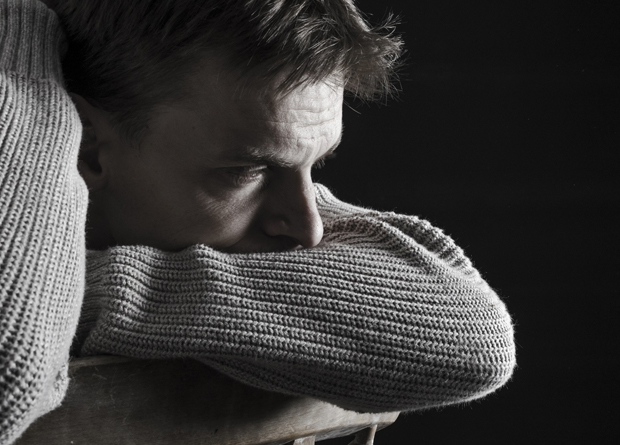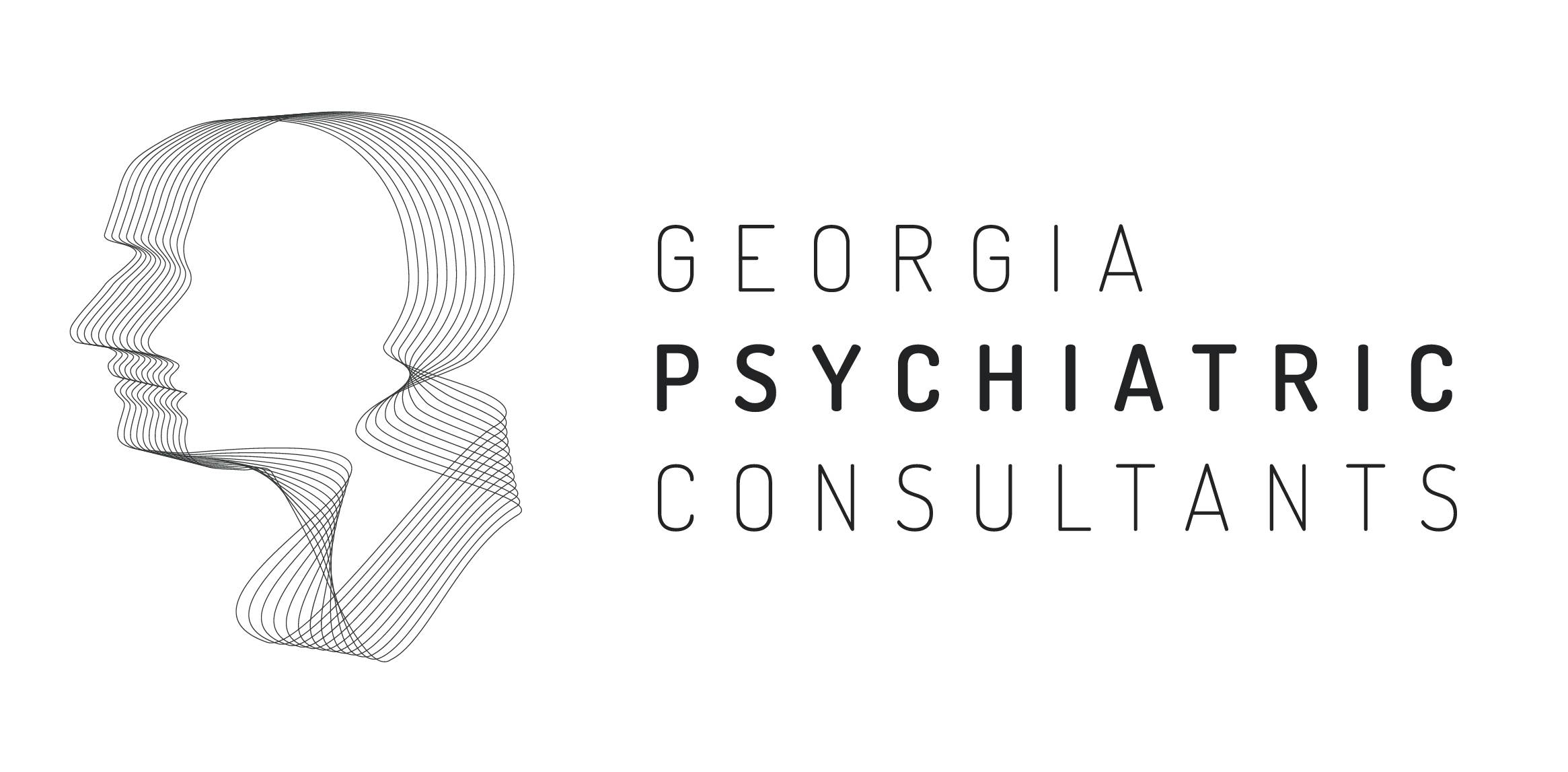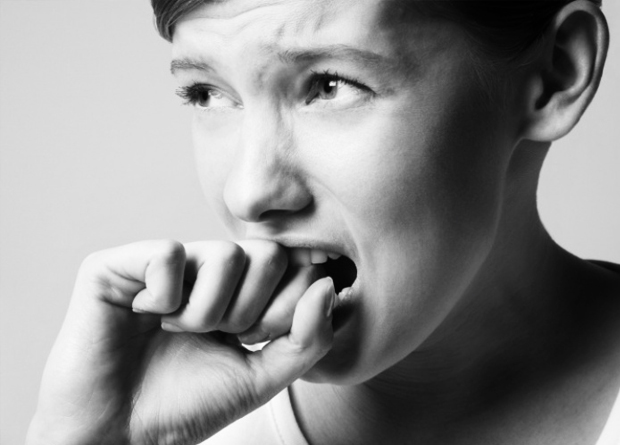
Everyone occasionally feels blue or sad. But these feelings are usually short-lived and pass within a couple of days. When you have depression, it interferes with daily life and causes pain for both you and those who care about you. Depression is a common but serious illness.
Many people with a depressive illness never seek treatment. But the majority, even those with the most severe depression, can get better with treatment. Medications, psychotherapies, and other methods can effectively treat people with depression.
There are several forms of depressive disorders.
Major depression—severe symptoms that interfere with your ability to work, sleep, study, eat, and enjoy life. An episode can occur only once in a person’s lifetime, but more often, a person has several episodes.
Persistent depressive disorder—depressed mood that lasts for at least 2 years. A person diagnosed with persistent depressive disorder may have episodes of major depression along with periods of less severe symptoms, but symptoms must last for 2 years.
Some forms of depression are slightly different, or they may develop under unique circumstances. They include:
- Psychotic depression, which occurs when a person has severe depression plus some form of psychosis, such as having disturbing false beliefs or a break with reality (delusions), or hearing or seeing upsetting things that others cannot hear or see (hallucinations).
- Postpartum depression, which is much more serious than the “baby blues” that many women experience after giving birth, when hormonal and physical changes and the new responsibility of caring for a newborn can be overwhelming. It is estimated that 10 to 15 percent of women experience postpartum depression after giving birth.
- Seasonal affective disorder (SAD), which is characterized by the onset of depression during the winter months, when there is less natural sunlight. The depression generally lifts during spring and summer. SAD may be effectively treated with light therapy, but nearly half of those with SAD do not get better with light therapy alone. Antidepressant medication and psychotherapy can reduce SAD symptoms, either alone or in combination with light therapy.
Bipolar disorder, also called manic-depressive illness, is not as common as major depression or persistent depressive disorder. Bipolar disorder is characterized by cycling mood changes—from extreme highs (e.g., mania) to extreme lows (e.g., depression).
Causes
Most likely, depression is caused by a combination of genetic, biological, environmental, and psychological factors.
Depressive illnesses are disorders of the brain. Brain-imaging technologies, such as magnetic resonance imaging (MRI), have shown that the brains of people who have depression look different than those of people without depression. The parts of the brain involved in mood, thinking, sleep, appetite, and behavior appear different. But these images do not reveal why the depression has occurred. They also cannot be used to diagnose depression.
Some types of depression tend to run in families. However, depression can occur in people without family histories of depression too. Scientists are studying certain genes that may make some people more prone to depression. Some genetics research indicates that risk for depression results from the influence of several genes acting together with environmental or other factors. In addition, trauma, loss of a loved one, a difficult relationship, or any stressful situation may trigger a depressive episode. Other depressive episodes may occur with or without an obvious trigger.
Signs & Symptoms
“It was really hard to get out of bed in the morning. I just wanted to hide under the covers and not talk to anyone. I didn’t feel much like eating and I lost a lot of weight. Nothing seemed fun anymore. I was tired all the time, and I wasn’t sleeping well at night. But I knew I had to keep going because I’ve got kids and a job. It just felt so impossible, like nothing was going to change or get better.”
People with depressive illnesses do not all experience the same symptoms. The severity, frequency, and duration of symptoms vary depending on the individual and his or her particular illness.
Signs and symptoms include:
- Persistent sad, anxious, or “empty” feelings
- Feelings of hopelessness or pessimism
- Feelings of guilt, worthlessness, or helplessness
- Irritability, restlessness
- Loss of interest in activities or hobbies once pleasurable, including sex
- Fatigue and decreased energy
- Difficulty concentrating, remembering details, and making decisions
- Insomnia, early-morning wakefulness, or excessive sleeping
- Overeating, or appetite loss
- Thoughts of suicide, suicide attempts
- Aches or pains, headaches, cramps, or digestive problems that do not ease even with treatment.
Who Is At Risk?
Major depressive disorder is one of the most common mental disorders in the United States. Each year about 6.7% of U.S adults experience major depressive disorder. Women are 70 % more likely than men to experience depression during their lifetime. Non-Hispanic blacks are 40% less likely than non-Hispanic whites to experience depression during their lifetime. The average age of onset is 32 years old. Additionally, 3.3% of 13 to 18 year olds have experienced a seriously debilitating depressive disorder.
Diagnosis
“I started missing days from work, and a friend noticed that something wasn’t right. She talked to me about the time she had been really depressed and had gotten help from her doctor.”
Depression, even the most severe cases, can be effectively treated. The earlier that treatment can begin, the more effective it is.
The first step to getting appropriate treatment is to visit a doctor or mental health specialist. Certain medications, and some medical conditions such as viruses or a thyroid disorder, can cause the same symptoms as depression. A doctor can rule out these possibilities by doing a physical exam, interview, and lab tests. If the doctor can find no medical condition that may be causing the depression, the next step is a psychological evaluation.
The doctor may refer you to a mental health professional, who should discuss with you any family history of depression or other mental disorder, and get a complete history of your symptoms. You should discuss when your symptoms started, how long they have lasted, how severe they are, and whether they have occurred before and if so, how they were treated. The mental health professional may also ask if you are using alcohol or drugs, and if you are thinking about death or suicide.
Other illnesses may come on before depression, cause it, or be a consequence of it. But depression and other illnesses interact differently in different people. In any case, co-occurring illnesses need to be diagnosed and treated.
Anxiety disorders, such as post-traumatic stress disorder (PTSD), obsessive-compulsive disorder, panic disorder, social phobia, and generalized anxiety disorder, often accompany depression. PTSD can occur after a person experiences a terrifying event or ordeal, such as a violent assault, a natural disaster, an accident, terrorism or military combat. People experiencing PTSD are especially prone to having co-existing depression.
Alcohol and other substance abuse or dependence may also co-exist with depression. Research shows that mood disorders and substance abuse commonly occur together.
Depression also may occur with other serious medical illnesses such as heart disease, stroke, cancer, HIV/AIDS, diabetes, and Parkinson’s disease. People who have depression along with another medical illness tend to have more severe symptoms of both depression and the medical illness, more difficulty adapting to their medical condition, and more medical costs than those who do not have co-existing depression. Treating the depression can also help improve the outcome of treating the co-occurring illness.
Treatments
Once diagnosed, a person with depression can be treated in several ways. The most common treatments are medication and psychotherapy.
Medication
Antidepressants primarily work on brain chemicals called neurotransmitters, especially serotonin and norepinephrine. Other antidepressants work on the neurotransmitter dopamine. Scientists have found that these particular chemicals are involved in regulating mood, but they are unsure of the exact ways that they work. The latest information on medications for treating depression is available on the U.S. Food and Drug Administration (FDA) website.
Popular newer antidepressants
Some of the newest and most popular antidepressants are called selective serotonin reuptake inhibitors (SSRIs). Fluoxetine (Prozac), sertraline (Zoloft), escitalopram (Lexapro), paroxetine (Paxil), and citalopram (Celexa) are some of the most commonly prescribed SSRIs for depression. Most are available in generic versions. Serotonin and norepinephrine reuptake inhibitors (SNRIs) are similar to SSRIs and include venlafaxine (Effexor) and duloxetine (Cymbalta).
SSRIs and SNRIs tend to have fewer side effects than older antidepressants, but they sometimes produce headaches, nausea, jitters, or insomnia when people first start to take them. These symptoms tend to fade with time. Some people also experience sexual problems with SSRIs or SNRIs, which may be helped by adjusting the dosage or switching to another medication.
One popular antidepressant that works on dopamine is bupropion (Wellbutrin). Bupropion tends to have similar side effects as SSRIs and SNRIs, but it is less likely to cause sexual side effects. However, it can increase a person’s risk for seizures.
Tricyclics
Tricyclics are older antidepressants. Tricyclics are powerful, but they are not used as much today because their potential side effects are more serious. They may affect the heart in people with heart conditions. They sometimes cause dizziness, especially in older adults. They also may cause drowsiness, dry mouth, and weight gain. These side effects can usually be corrected by changing the dosage or switching to another medication. However, tricyclics may be especially dangerous if taken in overdose. Tricyclics include imipramine and nortriptyline.
MAOIs
Monoamine oxidase inhibitors (MAOIs) are the oldest class of antidepressant medications. They can be especially effective in cases of “atypical” depression, such as when a person experiences increased appetite and the need for more sleep rather than decreased appetite and sleep. They also may help with anxious feelings or panic and other specific symptoms.
However, people who take MAOIs must avoid certain foods and beverages (including cheese and red wine) that contain a substance called tyramine. Certain medications, including some types of birth control pills, prescription pain relievers, cold and allergy medications, and herbal supplements, also should be avoided while taking an MAOI. These substances can interact with MAOIs to cause dangerous increases in blood pressure. The development of a new MAOI skin patch may help reduce these risks. If you are taking an MAOI, your doctor should give you a complete list of foods, medicines, and substances to avoid.
MAOIs can also react with SSRIs to produce a serious condition called “serotonin syndrome,” which can cause confusion, hallucinations, increased sweating, muscle stiffness, seizures, changes in blood pressure or heart rhythm, and other potentially life-threatening conditions. MAOIs should not be taken with SSRIs.
How should I take medication?
All antidepressants must be taken for at least 4 to 6 weeks before they have a full effect. You should continue to take the medication, even if you are feeling better, to prevent the depression from returning.
Medication should be stopped only under a doctor’s supervision. Some medications need to be gradually stopped to give the body time to adjust. Although antidepressants are not habit-forming or addictive, suddenly ending an antidepressant can cause withdrawal symptoms or lead to a relapse of the depression. Some individuals, such as those with chronic or recurrent depression, may need to stay on the medication indefinitely.
In addition, if one medication does not work, you should consider trying another. NIMH-funded research has shown that people who did not get well after taking a first medication increased their chances of beating the depression after they switched to a different medication or added another medication to their existing one.
Sometimes stimulants, anti-anxiety medications, or other medications are used together with an antidepressant, especially if a person has a co-existing illness. However, neither anti-anxiety medications nor stimulants are effective against depression when taken alone, and both should be taken only under a doctor’s close supervision.
Report any unusual side effects to a doctor immediately.
FDA warning on antidepressants
Despite the relative safety and popularity of SSRIs and other antidepressants, studies have suggested that they may have unintentional effects on some people, especially adolescents and young adults. In 2004, the Food and Drug Administration (FDA) conducted a thorough review of published and unpublished controlled clinical trials of antidepressants that involved nearly 4,400 children and adolescents. The review revealed that 4 percent of those taking antidepressants thought about or attempted suicide (although no suicides occurred), compared to 2 percent of those receiving placebos.
This information prompted the FDA, in 2005, to adopt a “black box” warning label on all antidepressant medications to alert the public about the potential increased risk of suicidal thinking or attempts in children and adolescents taking antidepressants. In 2007, the FDA proposed that makers of all antidepressant medications extend the warning to include young adults up through age 24. A “black box” warning is the most serious type of warning on prescription drug labeling.
The warning emphasizes that patients of all ages taking antidepressants should be closely monitored, especially during the initial weeks of treatment. Possible side effects to look for are worsening depression, suicidal thinking or behavior, or any unusual changes in behavior such as sleeplessness, agitation, or withdrawal from normal social situations. The warning adds that families and caregivers should also be told of the need for close monitoring and report any changes to the doctor. The latest information from the FDA can be found on their website.
Results of a comprehensive review of pediatric trials conducted between 1988 and 2006 suggested that the benefits of antidepressant medications likely outweigh their risks to children and adolescents with major depression and anxiety disorders.
What about St. John’s wort?
The extract from the herb St. John’s wort (Hypericum perforatum) has been used for centuries in many folk and herbal remedies. Today in Europe, it is used extensively to treat mild to moderate depression. However, recent studies have found that St. John’s wort is no more effective than placebo in treating major or minor depression.
In 2000, the FDA issued a Public Health Advisory letter stating that the herb may interfere with certain medications used to treat heart disease, depression, seizures, certain cancers, and those used to prevent organ transplant rejection. The herb also may interfere with the effectiveness of oral contraceptives. Consult with your doctor before taking any herbal supplement.
Psychotherapy
Several types of psychotherapy—or “talk therapy”—can help people with depression. Two main types of psychotherapies—cognitive-behavioral therapy (CBT) and interpersonal therapy (IPT)—are effective in treating depression. CBT helps people with depression restructure negative thought patterns. Doing so helps people interpret their environment and interactions with others in a positive and realistic way. It may also help you recognize things that may be contributing to the depression and help you change behaviors that may be making the depression worse. IPT helps people understand and work through troubled relationships that may cause their depression or make it worse.
For mild to moderate depression, psychotherapy may be the best option. However, for severe depression or for certain people, psychotherapy may not be enough. For example, for teens, a combination of medication and psychotherapy may be the most effective approach to treating major depression and reducing the chances of it coming back. Another study looking at depression treatment among older adults found that people who responded to initial treatment of medication and IPT were less likely to have recurring depression if they continued their combination treatment for at least 2 years.
More information on psychotherapy is available on the NIMH website.
Transcranial magnetic stimulation and other brain stimulation therapies
For cases in which medication and/or psychotherapy does not help relieve a person’s treatment-resistant depression, Transcranial magnetic stimulation or TMS is a great option. TMS therapy is a safe, non-invasive alternative to medication that has been approved for treatment of major depressive disorder since 2008. It involves the use of a magnetic field to target specific areas of the brain to alleviate depression. We offer TMS therapy for treatment of depression and other mental health conditions. If you are interested in TMS, please contact us.
electroconvulsive therapy (ECT) may be useful. ECT, formerly known as “shock therapy,” once had a bad reputation. But in recent years, it has greatly improved and can provide relief for people with severe depression who have not been able to feel better with other treatments.
Before ECT begins, a patient is put under brief anesthesia and given a muscle relaxant. He or she sleeps through the treatment and does not consciously feel the electrical impulses. Within 1 hour after the treatment session, which takes only a few minutes, the patient is awake and alert.
A person typically will undergo ECT several times a week, and often will need to take an antidepressant or other medication along with the ECT treatments. Although some people will need only a few courses of ECT, others may need maintenance ECT—usually once a week at first, then gradually decreasing to monthly treatments. Ongoing NIMH-supported ECT research is aimed at developing personalized maintenance ECT schedules.
ECT may cause some side effects, including confusion, disorientation, and memory loss. Usually these side effects are short-term, but sometimes they can linger. Newer methods of administering the treatment have reduced the memory loss and other cognitive difficulties associated with ECT. Research has found that after 1 year of ECT treatments, most patients showed no adverse cognitive effects.
Other more recently introduced types of brain stimulation therapies used to treat severe depression include vagus nerve stimulation (VNS), which involves direct stimulation of the vagus nerve through an implanted device that is similar to a pacemaker. This methods are not yet commonly used, but research has suggested that it shows promise.
More information on ECT, VNS, TMS and other brain stimulation therapies is available on the NIMH website.
Living with Depression
How do women experience depression?
Depression is more common among women than among men. Biological, life cycle, hormonal, and psychosocial factors that women experience may be linked to women’s higher depression rate. Researchers have shown that hormones directly affect the brain chemistry that controls emotions and mood. For example, women are especially vulnerable to developing postpartum depression after giving birth, when hormonal and physical changes and the new responsibility of caring for a newborn can be overwhelming.
Some women may also have a severe form of premenstrual syndrome (PMS) called premenstrual dysphoric disorder (PMDD). PMDD is associated with the hormonal changes that typically occur around ovulation and before menstruation begins.
During the transition into menopause, some women experience an increased risk for depression. In addition, osteoporosis—bone thinning or loss—may be associated with depression. Scientists are exploring all of these potential connections and how the cyclical rise and fall of estrogen and other hormones may affect a woman’s brain chemistry.
Finally, many women face the additional stresses of work and home responsibilities, caring for children and aging parents, abuse, poverty, and relationship strains. It is still unclear, though, why some women faced with enormous challenges develop depression, while others with similar challenges do not.
How do men experience depression?
Men often experience depression differently than women. While women with depression are more likely to have feelings of sadness, worthlessness, and excessive guilt, men are more likely to be very tired, irritable, lose interest in once-pleasurable activities, and have difficulty sleeping.
Men may be more likely than women to turn to alcohol or drugs when they are depressed. They also may become frustrated, discouraged, irritable, angry, and sometimes abusive. Some men throw themselves into their work to avoid talking about their depression with family or friends, or behave recklessly. And although more women attempt suicide, many more men die by suicide in the United States.
How do older adults experience depression?
Depression is not a normal part of aging. Studies show that most seniors feel satisfied with their lives, despite having more illnesses or physical problems. However, when older adults do have depression, it may be overlooked because seniors may show different, less obvious symptoms. They may be less likely to experience or admit to feelings of sadness or grief.
Sometimes it can be difficult to distinguish grief from major depression. Grief after loss of a loved one is a normal reaction to the loss and generally does not require professional mental health treatment. However, grief that is complicated and lasts for a very long time following a loss may require treatment. Researchers continue to study the relationship between complicated grief and major depression.
Older adults also may have more medical conditions such as heart disease, stroke, or cancer, which may cause depressive symptoms. Or they may be taking medications with side effects that contribute to depression. Some older adults may experience what doctors call vascular depression, also called arteriosclerotic depression or subcortical ischemic depression. Vascular depression may result when blood vessels become less flexible and harden over time, becoming constricted. Such hardening of vessels prevents normal blood flow to the body’s organs, including the brain. Those with vascular depression may have, or be at risk for, co-existing heart disease or stroke.
Although many people assume that the highest rates of suicide are among young people, older white males age 85 and older actually have the highest suicide rate in the United States. Many have a depressive illness that their doctors are not aware of, even though many of these suicide victims visit their doctors within 1 month of their deaths.
Most older adults with depression improve when they receive treatment with an antidepressant, psychotherapy, or a combination of both. Research has shown that medication alone and combination treatment are both effective in reducing depression in older adults. Psychotherapy alone also can be effective in helping older adults stay free of depression, especially among those with minor depression. Psychotherapy is particularly useful for those who are unable or unwilling to take antidepressant medication.
How do children and teens experience depression?
Children who develop depression often continue to have episodes as they enter adulthood. Children who have depression also are more likely to have other more severe illnesses in adulthood.
A child with depression may pretend to be sick, refuse to go to school, cling to a parent, or worry that a parent may die. Older children may sulk, get into trouble at school, be negative and irritable, and feel misunderstood. Because these signs may be viewed as normal mood swings typical of children as they move through developmental stages, it may be difficult to accurately diagnose a young person with depression.
Before puberty, boys and girls are equally likely to develop depression. By age 15, however, girls are twice as likely as boys to have had a major depressive episode.
Depression during the teen years comes at a time of great personal change—when boys and girls are forming an identity apart from their parents, grappling with gender issues and emerging sexuality, and making independent decisions for the first time in their lives. Depression in adolescence frequently co-occurs with other disorders such as anxiety, eating disorders, or substance abuse. It can also lead to increased risk for suicide.
An NIMH-funded clinical trial of 439 adolescents with major depression found that a combination of medication and psychotherapy was the most effective treatment option. Other NIMH-funded researchers are developing and testing ways to prevent suicide in children and adolescents.
Childhood depression often persists, recurs, and continues into adulthood, especially if left untreated.
How can I help a loved one who is depressed?
If you know someone who is depressed, it affects you too. The most important thing you can do is help your friend or relative get a diagnosis and treatment. You may need to make an appointment and go with him or her to see the doctor. Encourage your loved one to stay in treatment, or to seek different treatment if no improvement occurs after 6 to 8 weeks.
To help your friend or relative
- Offer emotional support, understanding, patience, and encouragement.
- Talk to him or her, and listen carefully.
- Never dismiss feelings, but point out realities and offer hope.
- Never ignore comments about suicide, and report them to your loved one’s therapist or doctor.
- Invite your loved one out for walks, outings and other activities. Keep trying if he or she declines, but don’t push him or her to take on too much too soon.
- Provide assistance in getting to the doctor’s appointments.
- Remind your loved one that with time and treatment, the depression will lift.
How can I help myself if I am depressed?
If you have depression, you may feel exhausted, helpless, and hopeless. It may be extremely difficult to take any action to help yourself. But as you begin to recognize your depression and begin treatment, you will start to feel better.
To Help Yourself
- Do not wait too long to get evaluated or treated. There is research showing the longer one waits, the greater the impairment can be down the road. Try to see a professional as soon as possible.
- Try to be active and exercise. Go to a movie, a ballgame, or another event or activity that you once enjoyed.
- Set realistic goals for yourself.
- Break up large tasks into small ones, set some priorities and do what you can as you can.
- Try to spend time with other people and confide in a trusted friend or relative. Try not to isolate yourself, and let others help you.
- Expect your mood to improve gradually, not immediately. Do not expect to suddenly “snap out of” your depression. Often during treatment for depression, sleep and appetite will begin to improve before your depressed mood lifts.
- Postpone important decisions, such as getting married or divorced or changing jobs, until you feel better. Discuss decisions with others who know you well and have a more objective view of your situation.
- Remember that positive thinking will replace negative thoughts as your depression responds to treatment.
- Continue to educate yourself about depression.




